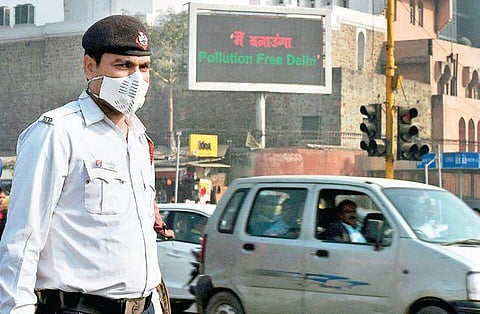

NEW DELHI: A survey to study the impact of air pollution and ultraviolet radiation exposure on the health of eyes of urban population of Delhi will be conducted by the All India Institute of Medical Sciences (AIIMS) from January next year.
A similar survey, conducted between 2010-2015 among the rural population in Gurugram had found high prevalence of dry eye and conjunctivitis, after which the need was felt to expand the exercise to the urban population of the National Capital, along with two other states.
The premier institute will be screening approximately 12,000 people of the National Capital under the exercise.“We will be taking into account primary pollutants like PM 2.5 (Particulate Matter) and PM 10, aerosol, NO2 (Nitrogen Dioxide), SO2 (Sulphur Dioxide), CO (Carbon Monoxide) along with sun exposure and also look at geographical location and local individual factors,” said Dr Radhika Tandon, Professor of Ophthalmology, AIIMS.
While PM 2.5 and PM 10 are PM 2 are finest pollutants capable of making inroads into human lungs and blood tissues, aerosols, a subset of air pollution, are tiny atmospheric particles which are suspension of fine solid particles or liquid droplets, in air.
The study, funded by Indian Council of Medical Research (ICMR), is a multicentre collaborative study on the impact of environmental changes and ultraviolet ray exposure on ocular health for Delhi, Guwahati for north eastern region and Hyderabad for coastal areas (Prakasam), by Dr RP Centre for Ophthalmic Sciences, AIIMS.
“We have received the funding and are in a process of making protocols. The study will start from January. We will be making clusters from all parts of Delhi. This time we are also coordinating the study with occupation and lifestyle of people,” said Dr Tandon.
The previous study had found that there is a high prevalence of dry eye and vernal kerato conjunctivitis (VKC) in the rural Gurugram population. VKC among children had emerged as an important eye health problem apparently linked with environmental factors. The prevalence of dry eye was found in 817 people (22.7 per cent of the sample surveyed), conjunctivitis in 403 (11.2 per cent) people, and cataract in 1,131 (31.5 per cent) people among Gurugram residents aged above 40 years.
In comparison, prevalence of these three among Guwahati and Prakasam residents was significantly low. Longer duration of exposure of bio-mass fuels in kitchen was associated with increased risk of cataract at all the three sites.
“Larger geographical areas were compared last time and there was a pattern coming from that survey. The data we received was enough to suggest that we need to move further. In Delhi, we will follow up sequentially with the people to be surveyed and see how their symptoms are changing with seasons and levels of pollution,” she said. The doctors will also be following up on the people who were given treatment during the last survey, she added.
previous study
A similar study among rural population was conducted in Gurugram, Guwahati, and Prakasam in AP
An increased risk of dry eye was found in Gurugram only
The study had found high prevalence of dry eye and vernal kerato conjunctivitis (VKC)
The prevalence of dry eye was found in 817 people (22.7 per cent of the sample surveyed), conjunctivitis in 403 (11.2 per cent), and cataract in 1,131 (31.5 per cent) among Gurugram residents aged above 40 years. The prevalence of VKC among children aged 5-15 years was 0.35 per cent in Gurugram